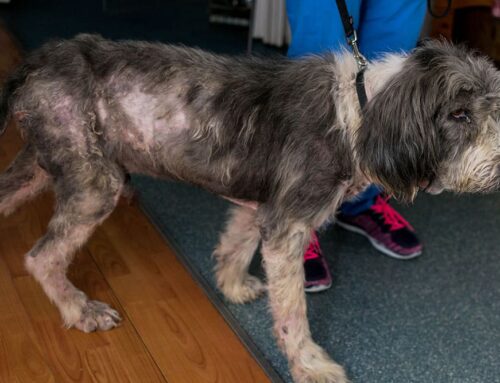Recognizing and Relieving Chronic Oral Pain in Dogs and Cats
Pets can’t tell us when their mouth hurts—but subtle signs like reluctance to eat or sensitivity around the face are clues to chronic oral pain. At MountainView Veterinary Hospital in Denville, NJ, we’re committed to helping pet owners identify, treat, and prevent oral pain in dogs and cats. This guide is your go-to resource for truly understanding chronic oral discomfort.
Why Chronic Oral Pain Happens
Oral pain in pets often arises due to:
- Periodontal disease—gum inflammation and bone loss beneath the gum line.
- Tooth resorption—especially common in cats, causing painful cavities under the enamel.
- Ulcerative or inflammatory oral conditions, such as stomatitis or eosinophilic ulcers.
- Developmental defects, like malocclusion or cleft palate.
- Broken, worn, or abscessed teeth from trauma or chronic wear.
Untreated oral disease can progress from pain to systemic infection, appetite loss, and decreased quality of life.
Spotting the Signs of Oral Pain
Detecting oral pain early can be as simple as paying attention. Watch for:
- Reduced appetite or drop in weight
- Reluctance to chew hard food or toys
- Pawing at the mouth or avoiding being petted around the face
- Excessive drooling, bad breath, or bloody saliva
- Facial swelling or sneezing (possible abscess)
- Behavior changes such as irritability, depression, or hiding
If your pet shows any of these signs, a full oral examination under sedation may be necessary to uncover hidden issues beneath the gum line.
Diagnostic Approach
At MountainView, we follow a step-by-step plan:
- Detailed history and physical exam, including oral probing.
- Baseline bloodwork to ensure safety before sedation.
- Sedated dental exam and full-mouth X-rays to pinpoint hidden pockets, abscesses, or resorptive lesions.
- Biopsy or cytology when oral ulcers, masses, or stomatitis are present to rule out serious diseases.
Our in-hospital imaging and diagnostic capabilities streamline this process, so you aren’t left waiting.
Treating Oral Pain—More Than a Tooth Extraction
Treatment includes:
- Professional dental cleaning with scaling and polishing to remove plaque and tartar.
- Tooth extractions or endodontic treatment to eliminate sources of chronic pain.
- Biopsy and appropriate care for inflammatory or ulcerative conditions
- Braces or orthodontics for developmental issues, as covered in Merck’s developmental abnormalities reference.
- Long-term pain control using multimodal analgesia strategies and medications- learn more from the Merck Vet Manual.
We follow modern pain-management protocols, including preemptive analgesia and combining therapies for maximum comfort, supported by evidence in Today’s Veterinary Nurse.
Pain Management—Your Pet Deserves Comfort
Oral surgeries and chronic inflammation require consistent pain relief. At MountainView, we use:
- NSAIDs, centrally acting analgesics, or opioids as needed
- Local anesthetics during procedures
- Adjunctive therapies such as laser therapy or special diets to reduce inflammation
Our aim is to keep your pet comfortable not only during recovery but in daily life—especially if extractions or chronic disease are involved.
Supporting Your Pet at Home
You can make healing smoother by:
- Switching to soft food for 7–14 days post-surgery, then gradually introducing kibble as tolerated
- Feeding via syringe or feeding tube in severe cases. Texas A&M Pet Talk offers valuable insights into pet feeding tubes
- Maintaining oral hygiene with daily brushing, dental chews, or VOHC-approved dental diets
- Scheduling dental rechecks to monitor plaque control and assessing pain levels
Prevention: Your Best Defense
- Annual dental exams and cleanings—catch disease before pain begins
- Daily dental care—brushing, chews, water additives, or dental diets
- Nutrition choices that support oral health
- Monitoring behavior—if eating habits or mouth sensitivity change, seek a prompt checkup
Emergency Signs to Watch
Seek immediate care if you notice:
- Sudden reluctance to eat or sharp decrease in appetite
- Drooling blood or pus, facial swelling
- Severe mouth pain during handling
MountainView Veterinary Hospital has a caring team ready to respond. Please contact us for urgent concerns.

FAQs About Oral Pain in Pets
Is tooth extraction the only option?
Not always. Endodontic treatment, periodontal therapy, or orthodontics may preserve teeth when appropriate.
Can oral pain affect other parts of the body?
Yes—chronic inflammation or infection can spread, causing kidney, heart, or liver issues.
How often should I schedule dental care?
At least once a year for most pets. For high-risk pets, cleanings every 6 months may be beneficial.
Take Action for Your Pet’s Comfort
Oral pain is often silent and easily overlooked—until it causes serious suffering. MountainView Veterinary Hospital in Denville is dedicated to detecting hidden disease, managing pain, and preventing recurrence through quality care and client education.
Schedule your pet’s dental exam or oral pain consultation today and take the first step toward a comfortable, vibrant life. On behalf of our compassionate team, thank you for choosing us as your partner in pet care.









Leave A Comment